Most cycling breakdowns can be mitigated if you appreciate that things wear out with use: brake pads, chains, cogs, bearings - they all have a finite lifespan and are pretty much disposable. That's the deal - use or abuse your bike and the red in your maintenance ledger increases over time.
All of that is in your control. Tyres, however, are forged with secret amounts of Infinite Improbability allowing them to stay useable for years or seconds, wear out quickly or slowly, be 100% puncture-proof or pop like soap bubbles around a toddler.
There's literally nothing you can do - riding through broken glass with impunity will either have zero effect or can, at some point (before or after the event) cause your tyre or tyres to explode while hoisted into a work stand, scattering pigeons and loosening roof tiles in a two-mile radius.
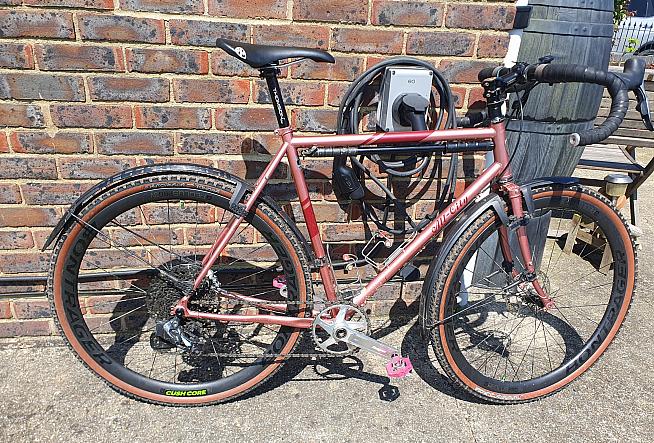
The prospect of a visit from the puncture fairy may occur at any time, but the battle lines were first drawn up by Robert William Thompson in 1846 and fortified by the evidently more recognisable John Dunlop in 1895 with the invention and reinvention of the pneumatic tyre. Until then, JD's son had to ride his tricycle around on solid tyres, immune from the spikey curses the fairy flung out.
There have been a few tiny revisits to that heady time, trying lighter materials to make solid tyres from, but they never really caught on. And so, vehicles (and cyclists particularly) have had to ride with this Damoclean threat hanging over their journeys.
A few skirmishes have been won, introducing a liquid sealant to a tyre to thwart the stings and arrows of Her Punctureness but more recently, with advancing technology, it's been possible to revisit the halcyon days of solid tyres with compressible, featherweight foam liners that reduce the misery of a puncture to almost zero.
Tyre liners or inserts have been used 'secretly' in the pro peloton during some of the Monuments, protecting the rider and the wheels in the event of a puncture - tubeless tyres can be parted from the rim in spectacular fashion, spoiling everyone's day.
Another slant on sudden decompression syndrome (yep, just made that up) comes from the benefit lower pressures have on comfort over sub-optimal terrain. This is why CushCore has spent the last five years developing their Tyre Suspension system that significantly reduces this risk of burping tyres over lumpy ground.
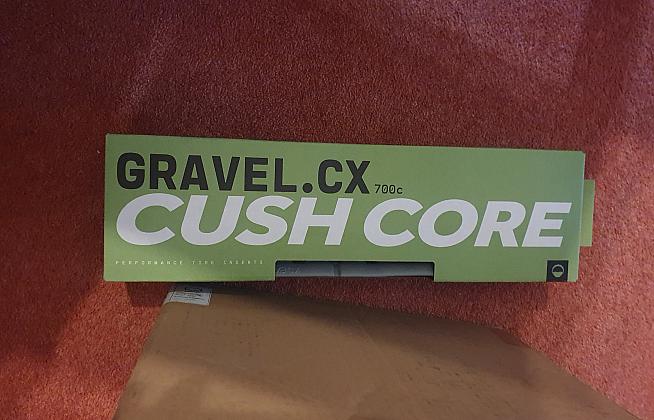
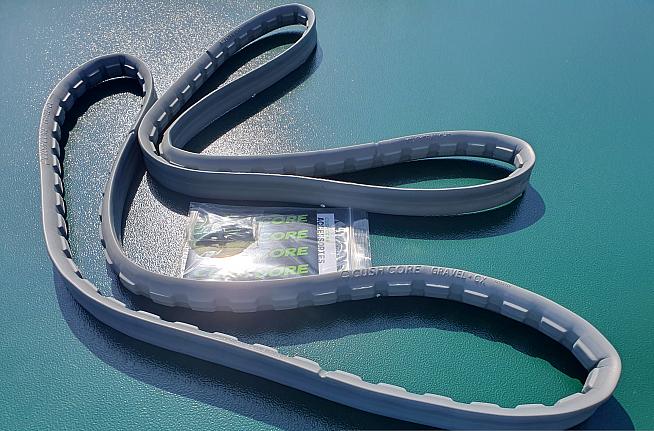
The CushCore (not, as you might imagine from the name, a totally addictive game for your phone) Gravel-CX insert is an ultra-lightweight liner which not only keeps precious air in your hoop jackets but reinforces the bond between rim and bead thus protecting your hardware.
The foam filler is dense enough to keep you going, albeit gingerly when the internal and external pressures normalise; but, more importantly, it preserves the integrity of the tyre so you can run it semi-flat on purpose with the air/foam taking the bigger hits together, a bit like when Power Rangers combine.
All of this sounds fine and dandy, but there must be a downside. Well, there is.
Fitting a foam liner to a tyre with tolerances *just* tight enough to allow you to run it tubeless is only the start of it. Cush Core offer many online tutorials to help you not have a crisis of faith. Even if you have thumbs like an iguanodon, you do need assistance in setting them up for the first time.
If you're picky about where the maker's name goes, check and check and check again before putting the tyres on as it's a colossal ball ache if you get them on and find they're not quite perfect or, worst case scenario, your tyre isn't omnidirectional.
Cush Core recommend (of course they do) that you purchase their impressive Bead Dropper tyre lever and Bead Bro clips (designed to centralise the tyre on the rim) to ease your labours - I did just fine with 'normal' tyre levers and weapons-grade swearing.
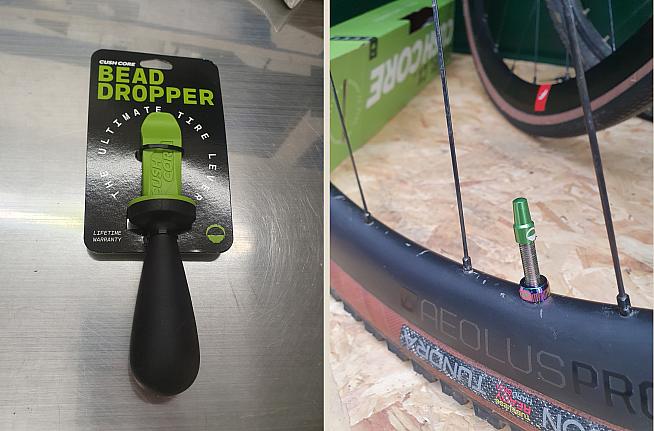
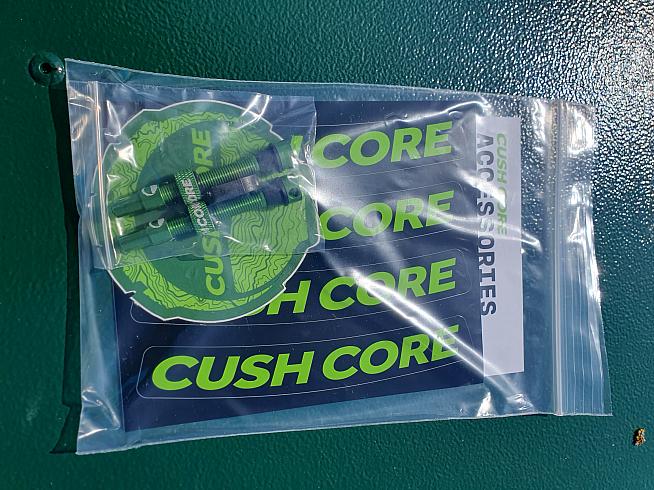
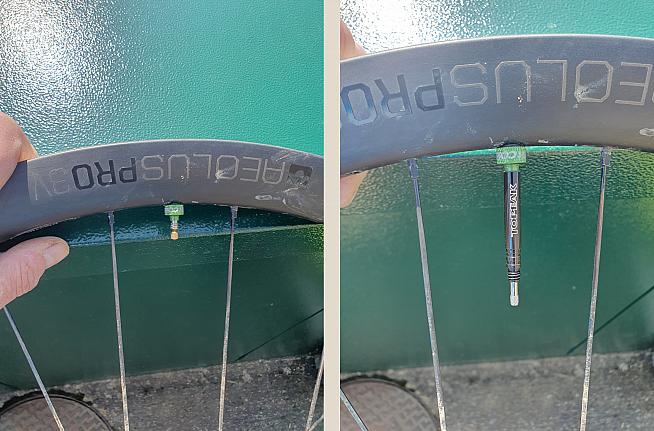
Some favour popping sealant into the tyre, others favour it through the valve core. The valves that Cush Core supply - acid green to go with the company livery - allow the air to whoosh into your tyre sideways, pushing atmospheres around the inside instead of straight into the liner. I decided, because that's what I'm used to doing, to squirt through the valve hole but was punished with slow but definite decompression over a couple of hours.
My wheels - a set of Bontrager Aeolus Pro 3V with 25mm internal rim width - have a proprietary plastic tubeless liner so I couldn't blame it on getting the rim taping wrong; I guessed that the liner was filling some or all of the space where the fluid would go to ensure an air-tight seal.
I tried to put this theory to the test by popping off the tyre and redoing the set-up, making sure that tubeless fluid squooshed around in all those difficult-to-reach places - which is when I realised just how well the bead had been set in the rim by the liner. This is why I know the Bead Dropper is so impressive - I've never used a chunkier lever and all of my not-inconsiderable weight and strength just about got the job done.
As I suspected, with the tyre removed it turned out that much of the rim was fluid-free and as dry as a cream cracker. Once reset and repumped the rewarding sound of silence was heard and firmness has been maintained since - you at the back, stop smirking.
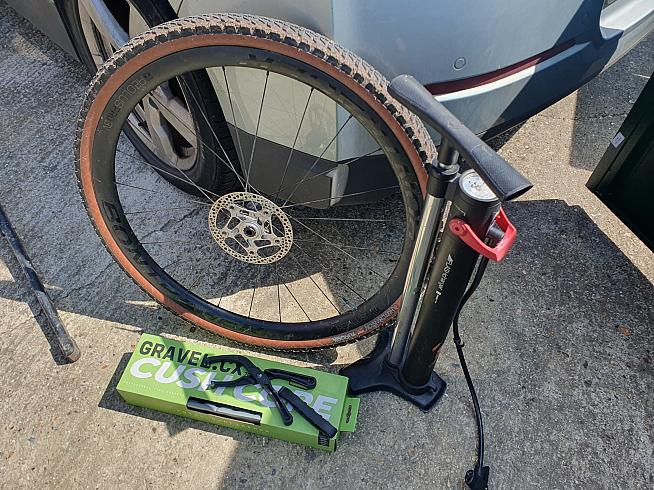
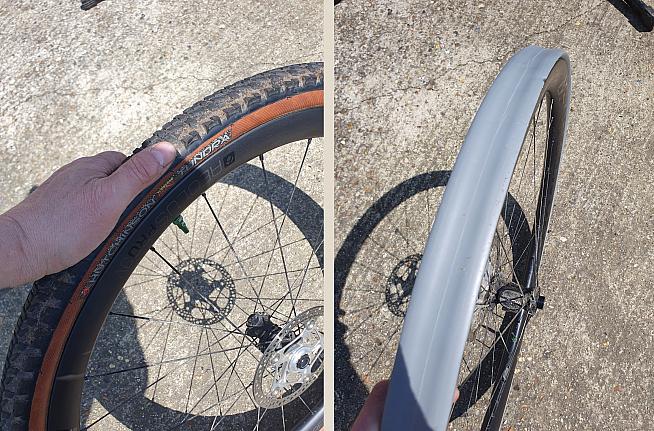
CushCore - is it worth it?
So, do these liners make a difference out on the lumpy stuff? That's the real question you've probably been shouting all this time, and the answer is yes.
At first, you feel like you can't trust the hype and run your normal pressures, but reducing the PSI a notch or two, with a CO2 inflator on cynical standby, improves the ride without the waddling caused by your sidewalls buckling. I'm running them on my 'very' gravel bike about 5 PSI lower than usual and over some of the rougher parts of my favourite rides and was never in danger of spitting out my dentures, nor did it feel sluggish when the calmer terrain ensued.
They inserts weigh in at 120g apiece - comparable to an inner tube, but there the comparison stops. Not only are ride-ending flats virtually consigned to history, but CushCore claim their inserts offer a 12% smoother ride and 3% reduction in rolling resistance.
CushCore liners really do seem worth the actual effort, but you may be dissuaded by the price tag; at £170 for a pair, these inserts cost more than most top-end tyres.
On the other hand, they seem pretty durable and are reusable so if you choose to adopt them you should expect springy and leak-free gambolling around until you, or your tyres, wear out.
Some may not be able to justify the expense but unlike other expendables like bearings, pads and rotors, they're a one-time purchase. It depends on how much tariff you place on comfort and flicking the vee's at the Puncture Fairy.
CushCore Gravel/CX Tyre Inserts, £169.99 from www.silverfish-uk.com
0 Comments





